Reading through editions of the “Fallon Standard” published 100 years ago, I noticed the many ads for pills, tonics, tinctures, elixirs-- medicinal panaceas of all kinds, replete with testimonials and outrageous claims about miraculous cures. That kind of advertising proliferated in the late 19th and early 20th centuries, and the local papers provide visual proof that what were called “patent medicines” had found their way to Fallon.
Despite the phrase “patent medicines,” the advertised goods were neither patented or, in most cases, medicinal. “It was rare for a patented medicine to be pharmacologically effective, and none lived up to the promises made by their advertising” (“Patent Medicine.” Wikipedia. February 14, 2025). The phrase was broadly used to describe anything that was cleverly packaged, widely advertised and purported to cure… whatever, from liver ailments to coughs to wrinkles. The history of selling flim-flam cures goes back at least to the Roman Empire, but in America, in the latter part of the 19th century, so-called Medicine Shows, basically tents manned by super salesmen, popped up all over the country, especially in the West. The most notorious of them promoted, literally, snake oil, actually made of oil derived from snakes and promoted to cure whatever ailed you. The shows and products were so ubiquitous that the term “selling Snake Oil” still has meaning today. Two of the most famous Medicine Shows were put on by the Kickapoo Indian Medicine Company and Hamlin’s Wizard Oil Company. They limbered up their audiences with mini circus acts—acrobats and trick-performing dogs—before the real sales pitches began. Because the products were unregulated, most of them contained opium or alcohol or both, and deaths from overdoses were not uncommon. The first regulations on patent medicines were passed by Congress in the 1906 Pure Food and Drug Act, but the regulatory powers granted by the act were narrowly defined, and fraud was hard to prove. A regulatory act with teeth was not passed until 1938, when the Food, Drug and Cosmetic Act was passed, mandating a list of ingredients on the labels of foods, drugs, and cosmetics.
Thus, patent medicines continued to proliferate in the 1920’s. Readers of the “Fallon Standard” suffering from a cough might be tempted to buy “HALL’S CATARRH MEDICINE,,, packaged in Toledo, Ohio, and sold by druggists for over 40 years.” Need more muscle? Use SCOTT’S EMULSION to “vitalize the deficient diet…. promotes growth; builds strength.” Kidneys kicking up? Take JAD SALTS, “a lithia water drink.” Feeling joint pain? ROWLES RED PEPPER HEAT “ends rheumatism.” Feeling just generally out of sorts? “Save your money. One Box of TUTT’S PILLS saves many dollars in doctor’s bills. For diseases of the liver, sick headache, dyspepsia, constipation, biliousness.” Bad skin? Try “a little jar of ROWLES MENTHOS SULPHER.” The most ambitious claim was made in an ad for ADLERIKA. “ADLERIKA acts on both upper and lower bowel and removes all gases and poisons. Brings out matter you never thought was in your system.” Who could resist?
Hospitals and doctors also advertised their services in the “Standard.” In the Spring of 1925, Fallon could claim at least four hospitals. Mrs. Moore’s Hospital was located at 40 North Nevada Street; Mrs. Mitchell’s Hospital was located at 101 Broadway. Additionally, mentioned in news items were the Fallon Sanitorium and Mrs. Kinney’s Hospital, and two hospitals located in San Franisco placed ads in the local paper. Who were the doctors? Dr. C.H. Lehners advertised himself as a “physician & Surgeon”; Dr. H. W. Sawyer, M.D. advertised himself as a “Specialist in Obstetrics and feeding and diseases of Infants.” (Dr. Sawyer was the father of Nevada’s 21st Governor, Grant Sawyer,) H.R.S. Consol, D.C. advertised his Chiropractic service, claiming that, “I tell your Conditions Without Asking Questions.”
Finally, a reader of the “Standard” could find out which neighbor went to which doctor for what illness and landed in which hospital by reading through the items in the meatiest feature of the paper, a column titled “Local Events and News About Your Neighbors.” All the nitty-gritty medical details were there, reported, updated, and published weekly.
Please send your thoughts and items to [email protected]
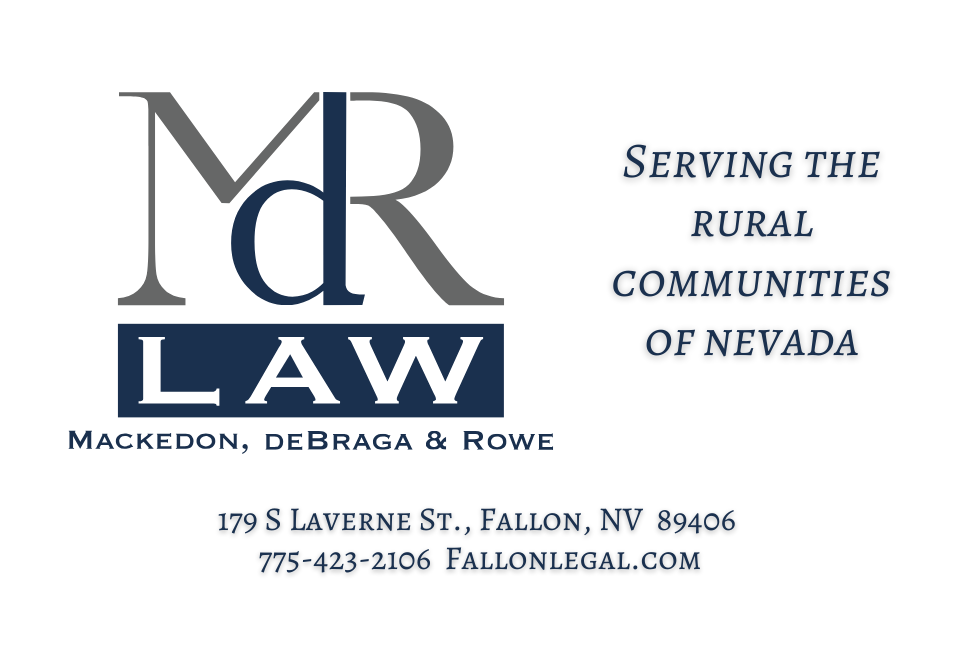


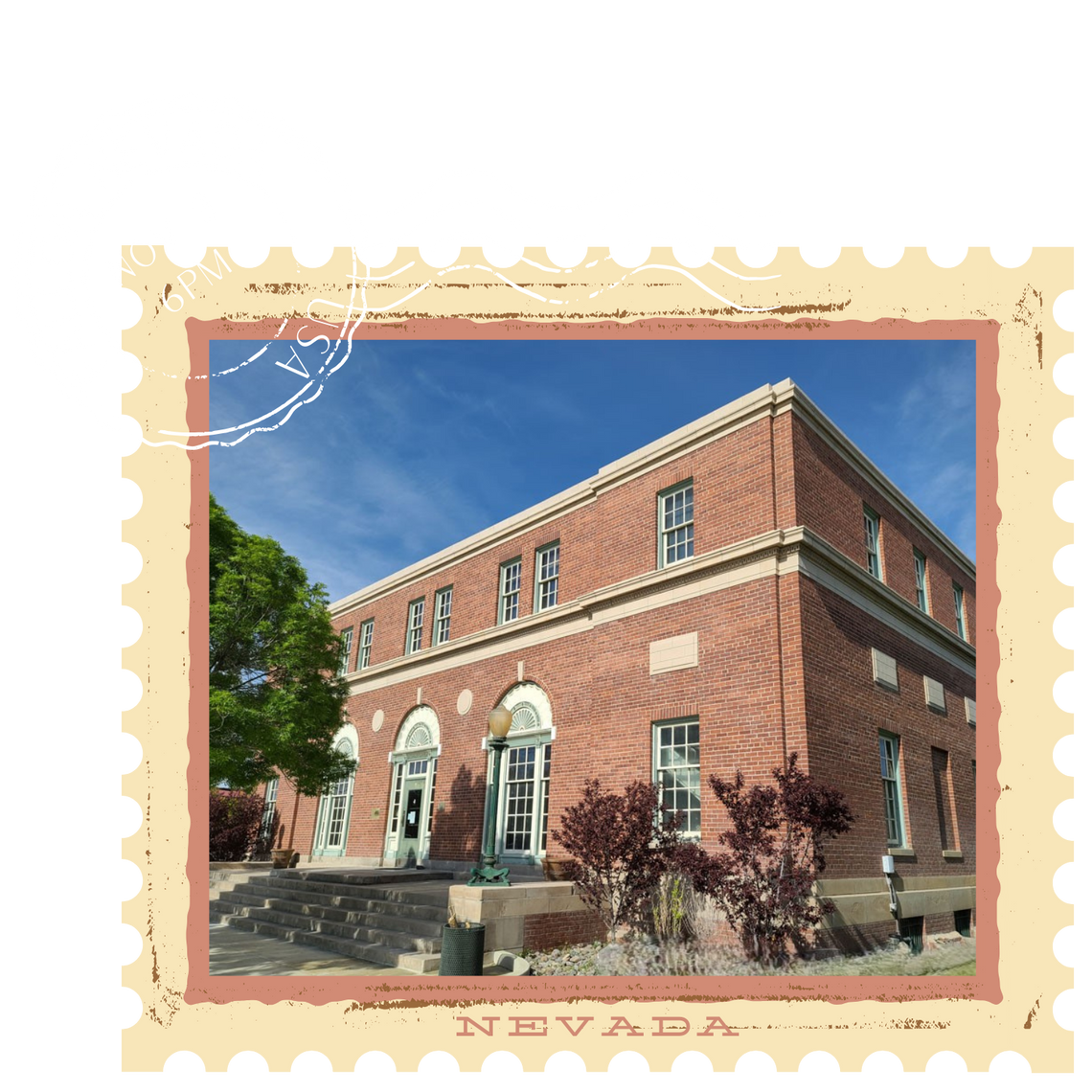
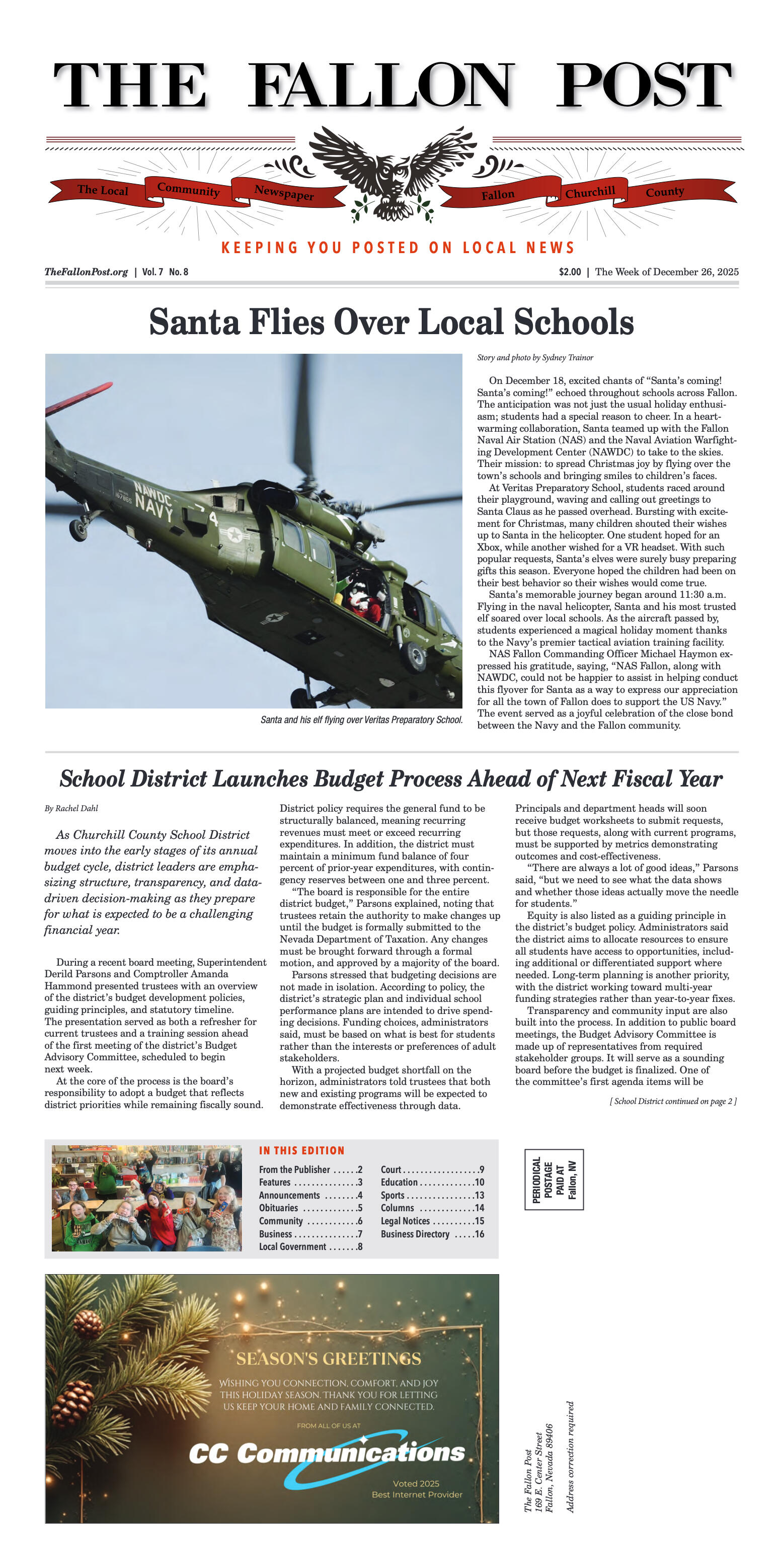
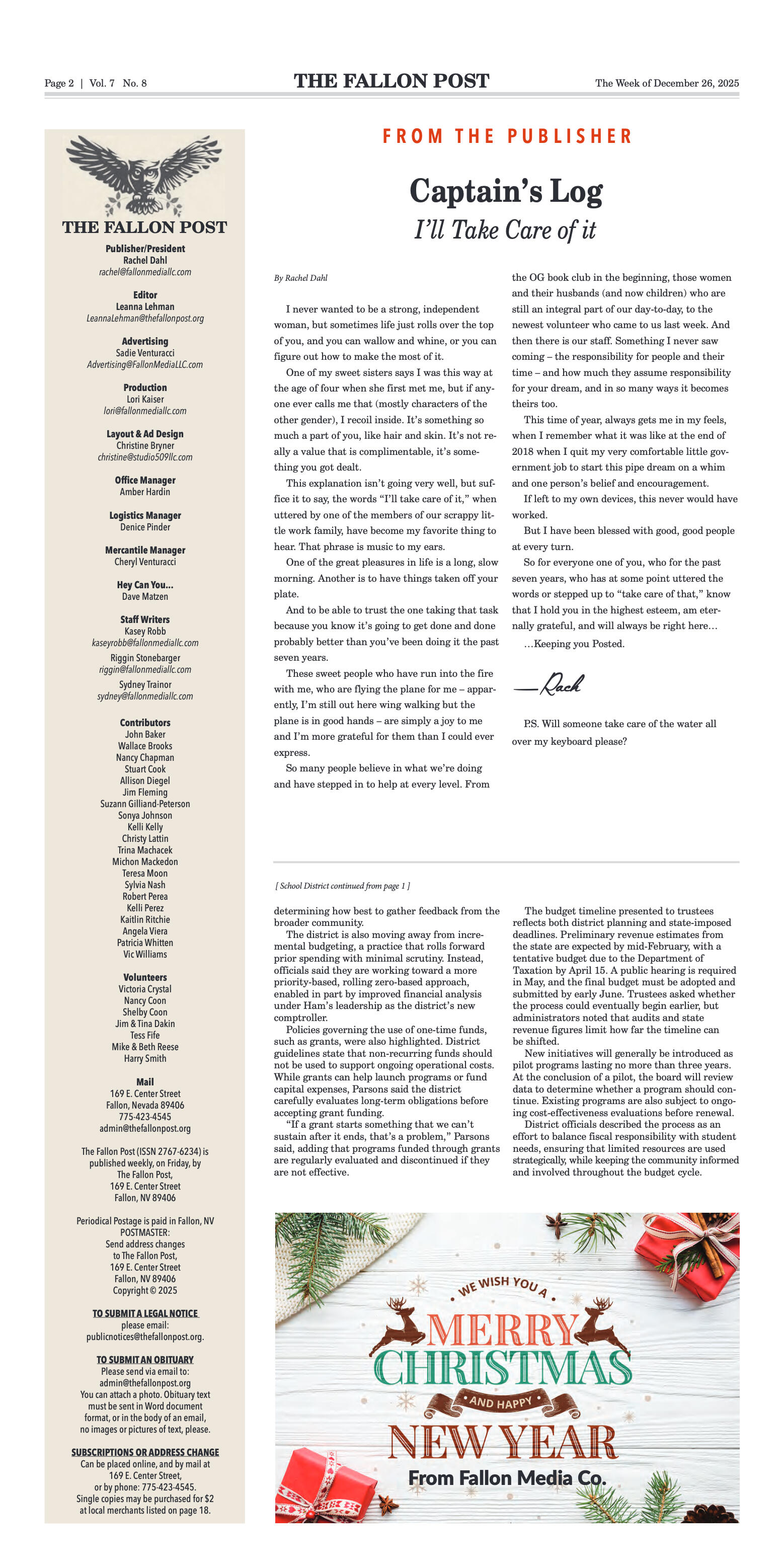
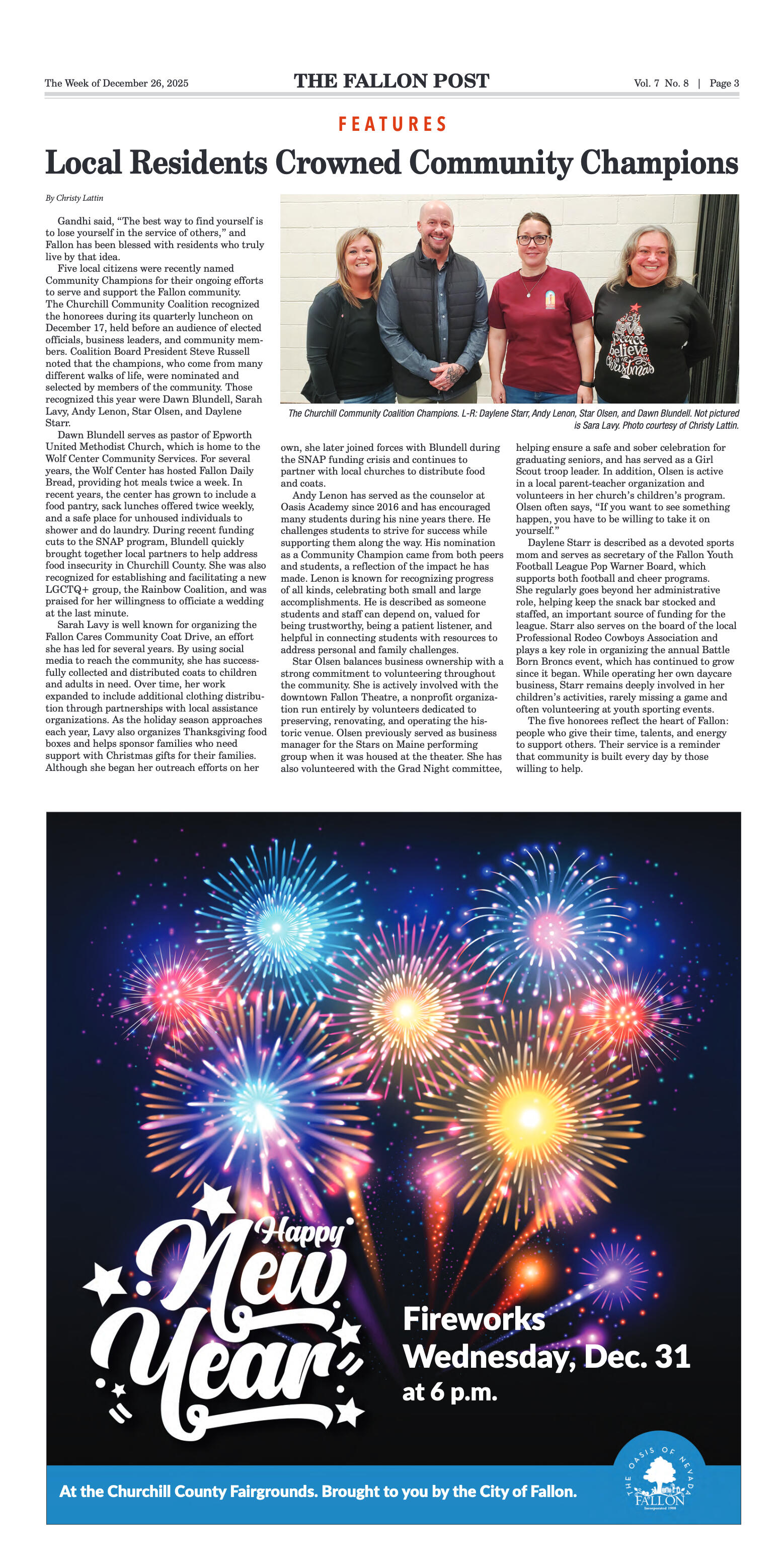
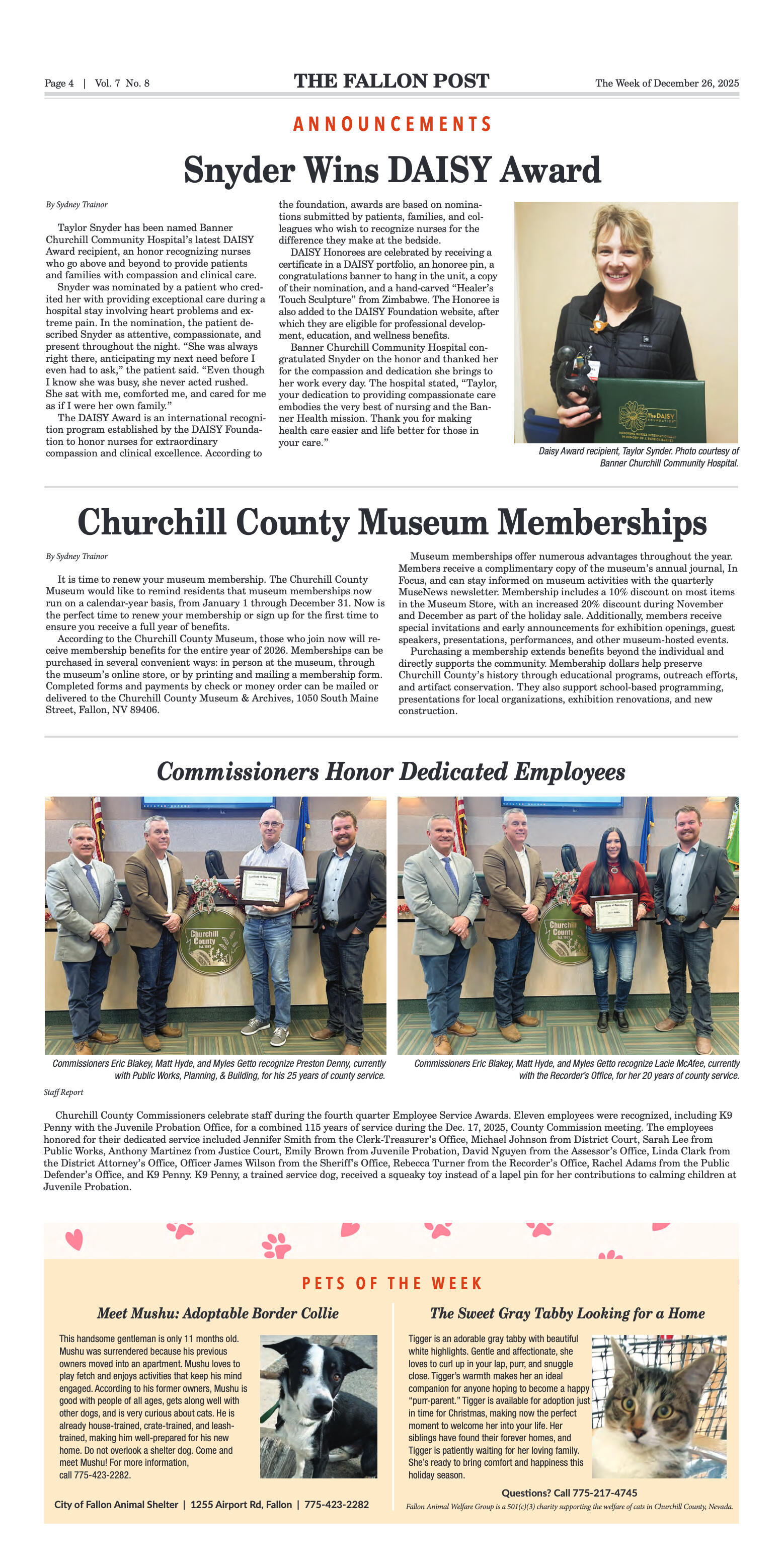
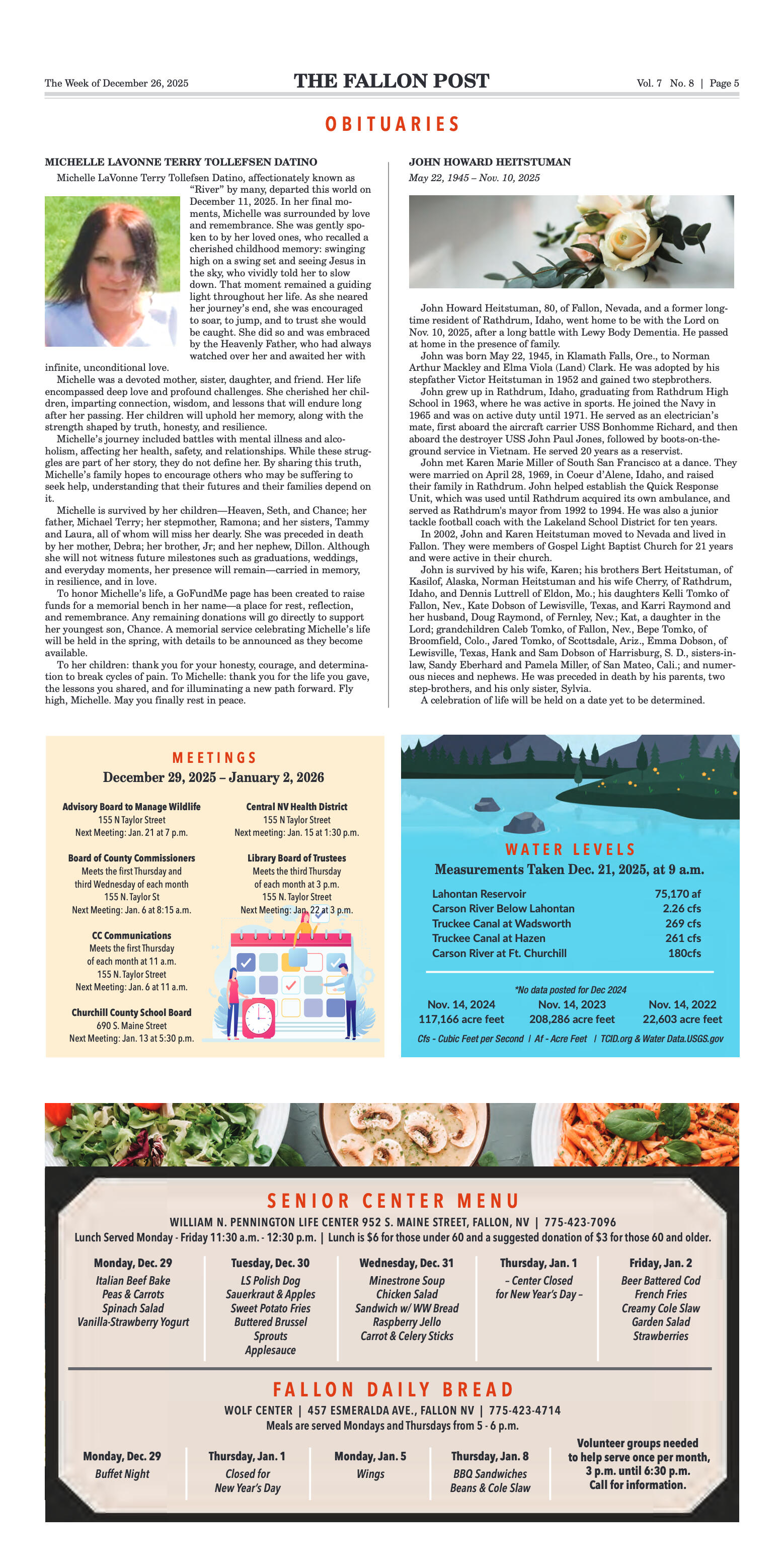
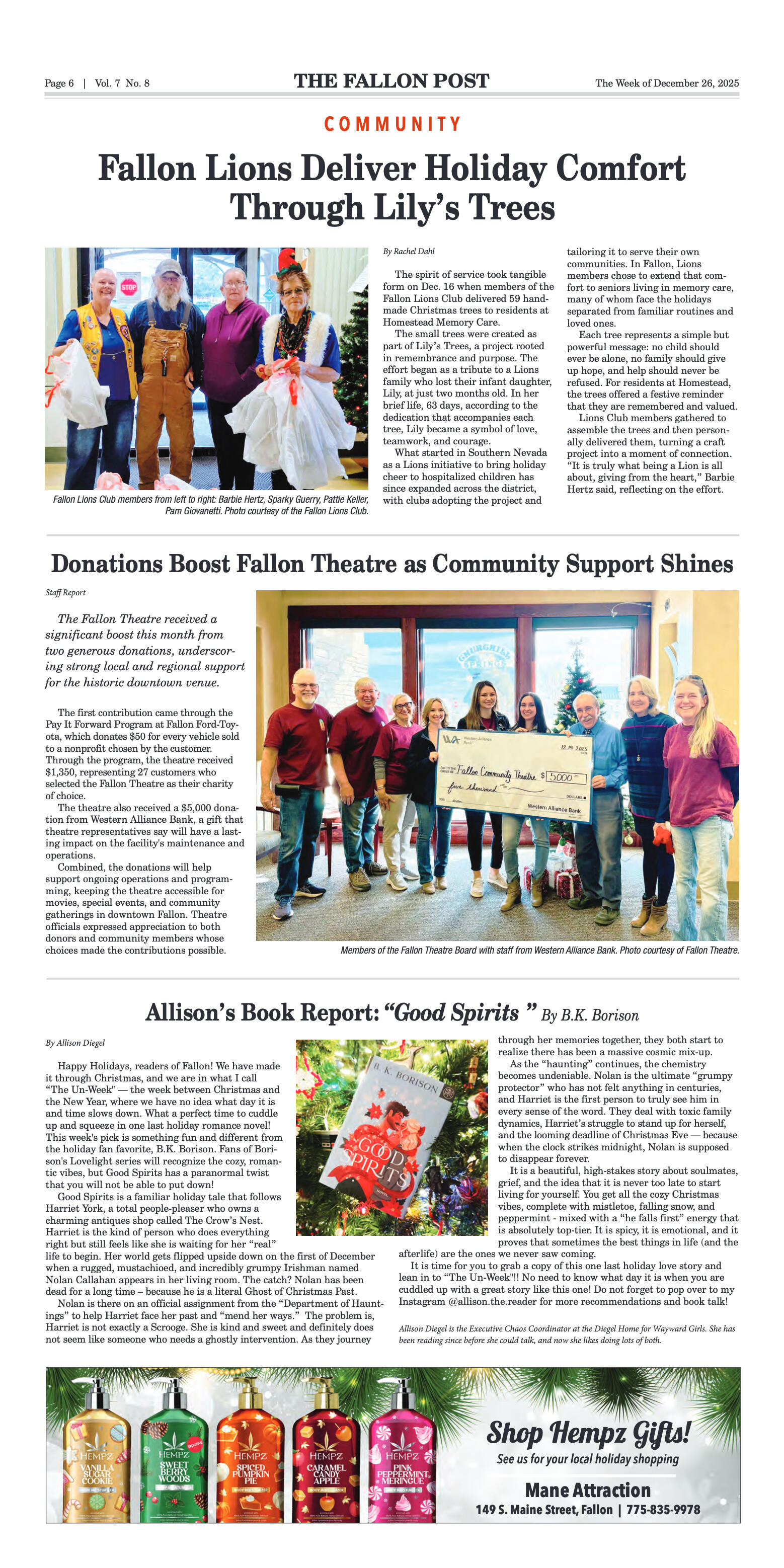
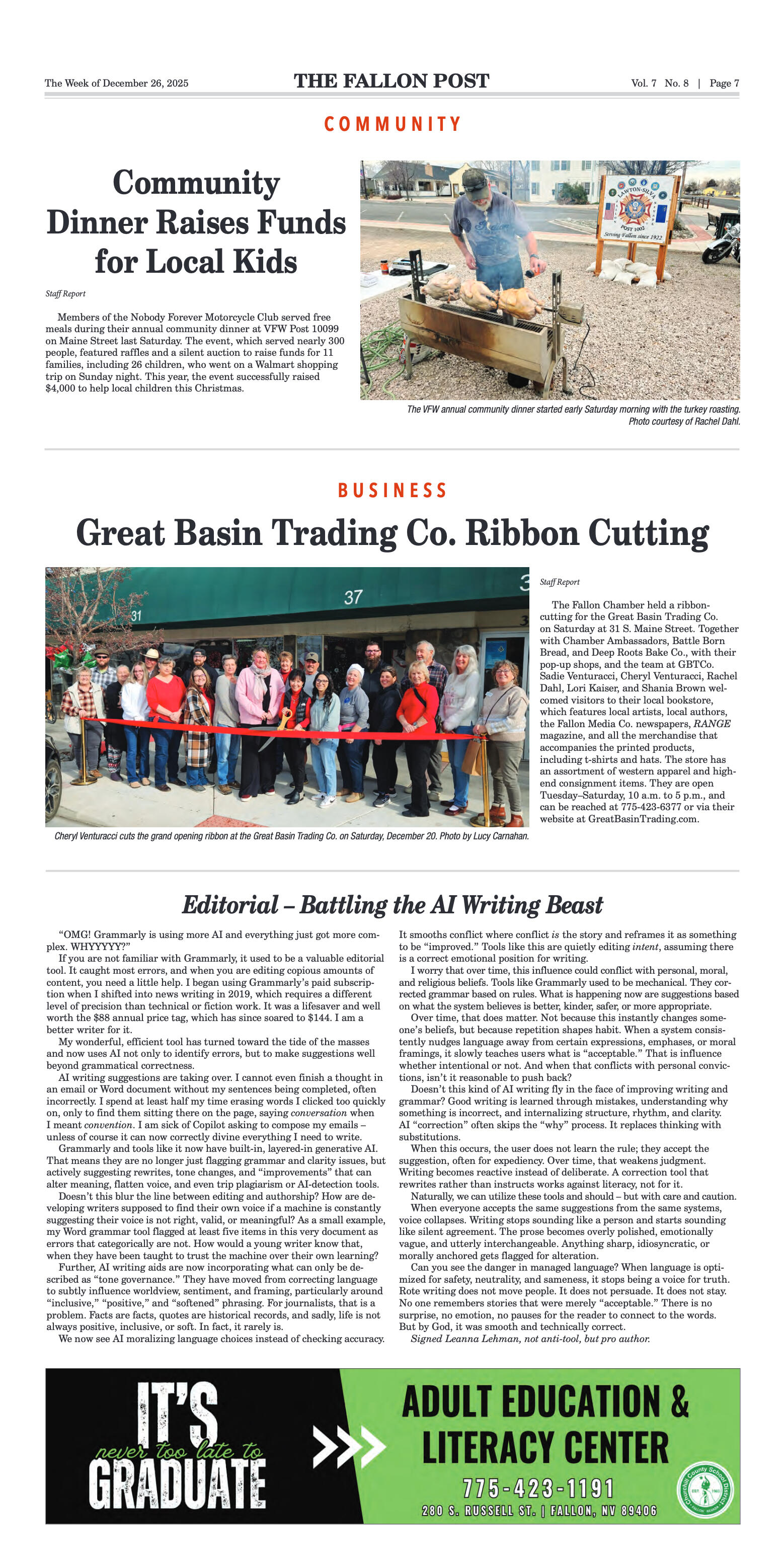
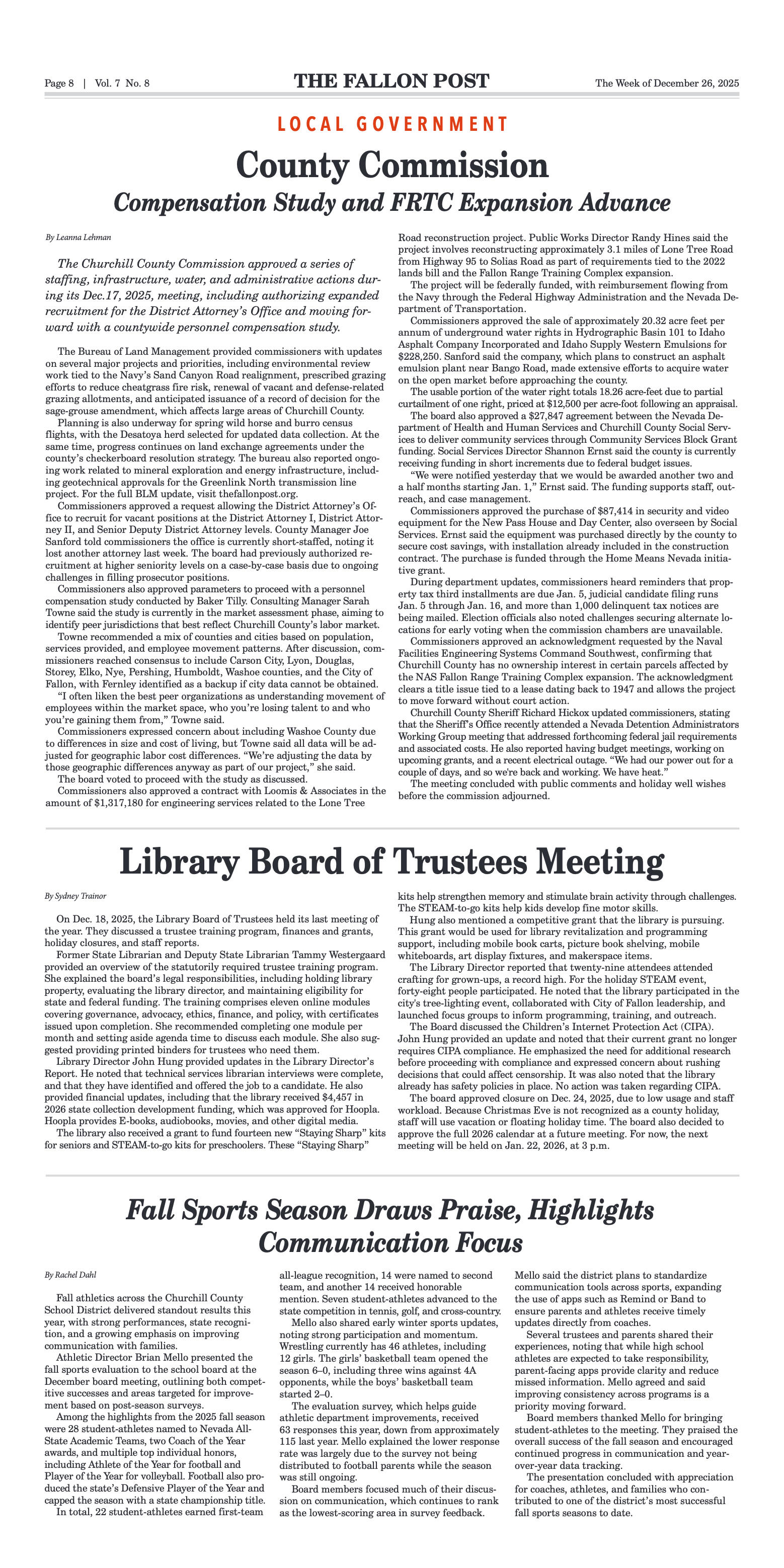
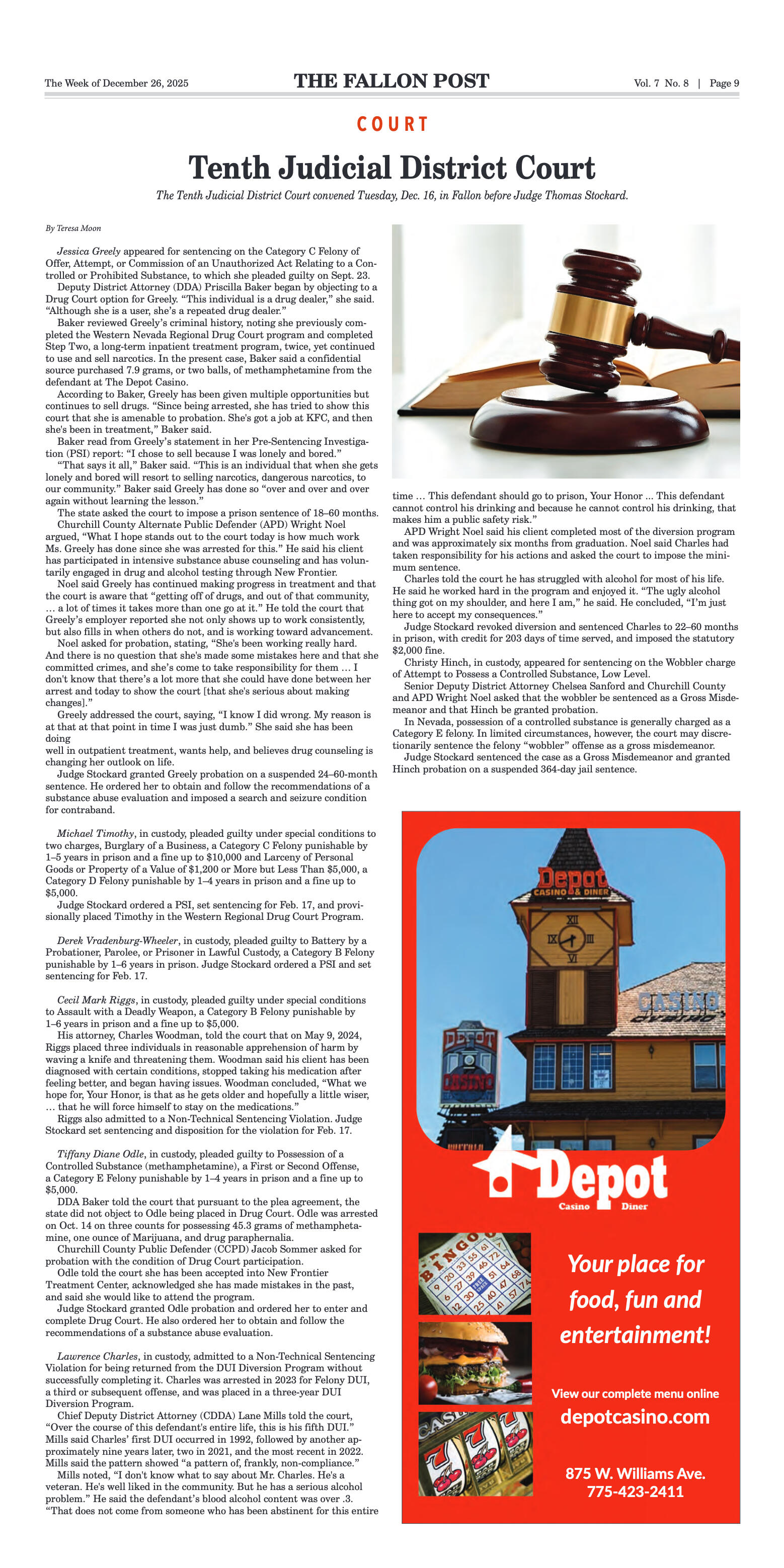
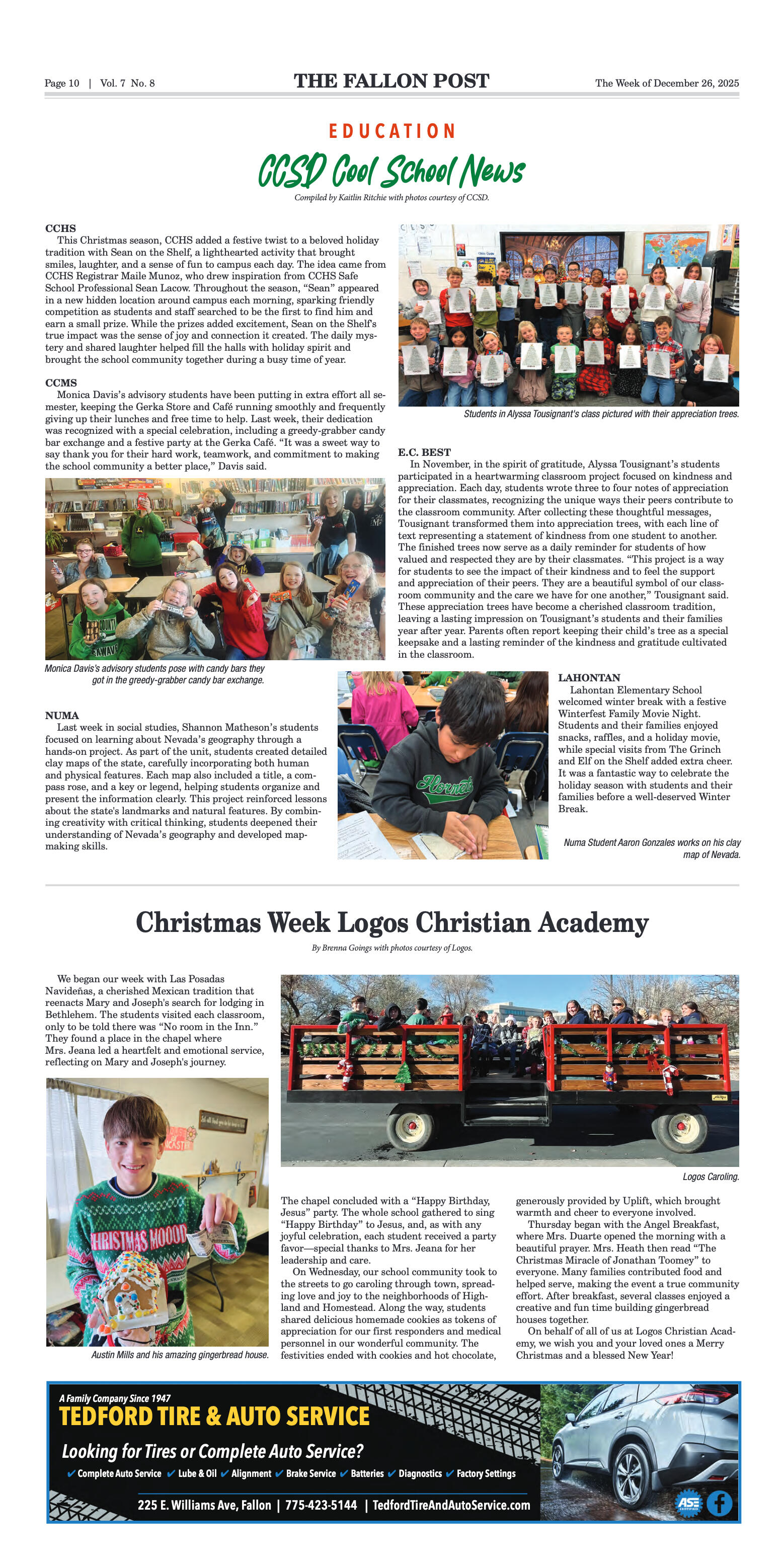
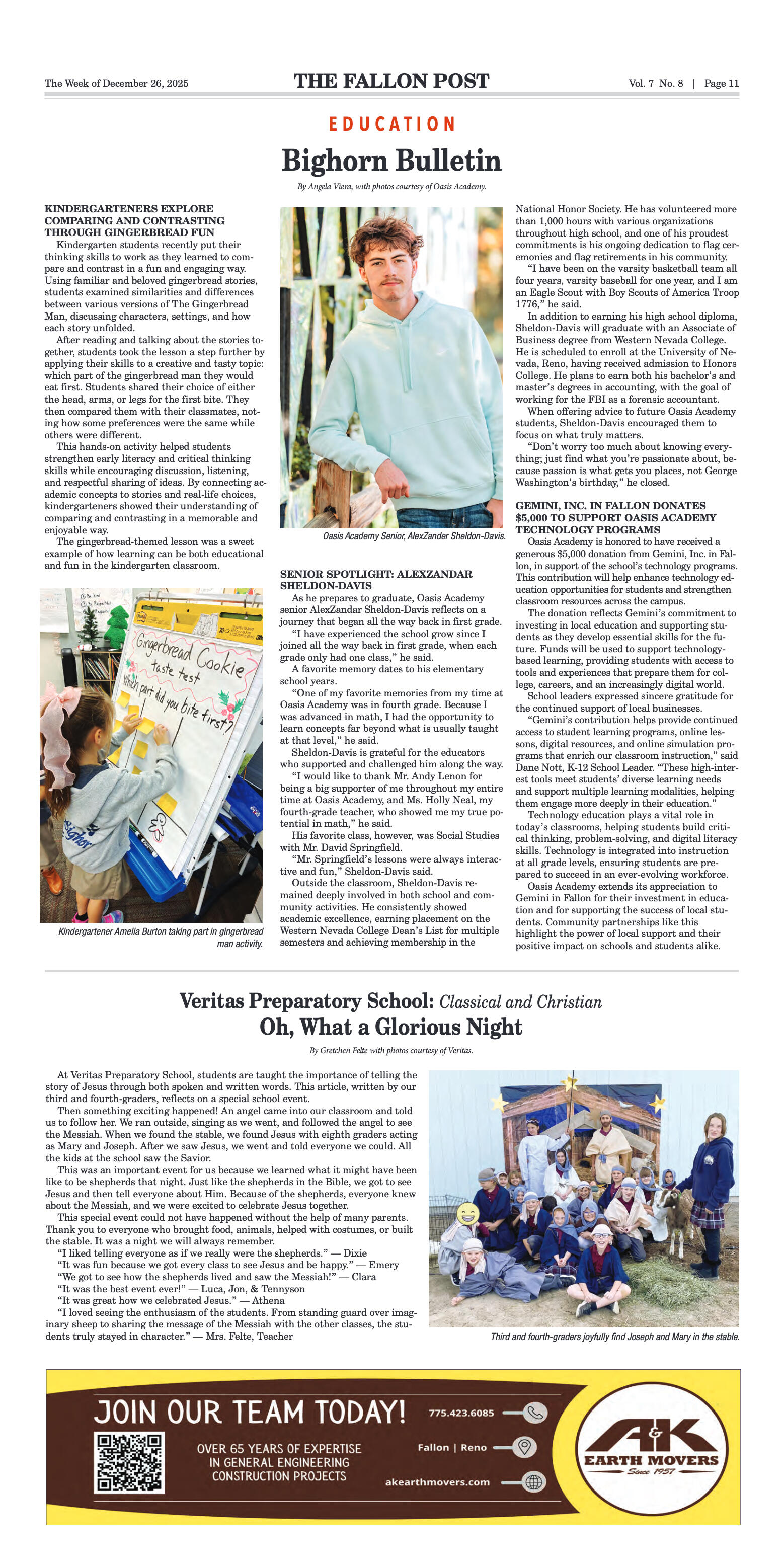
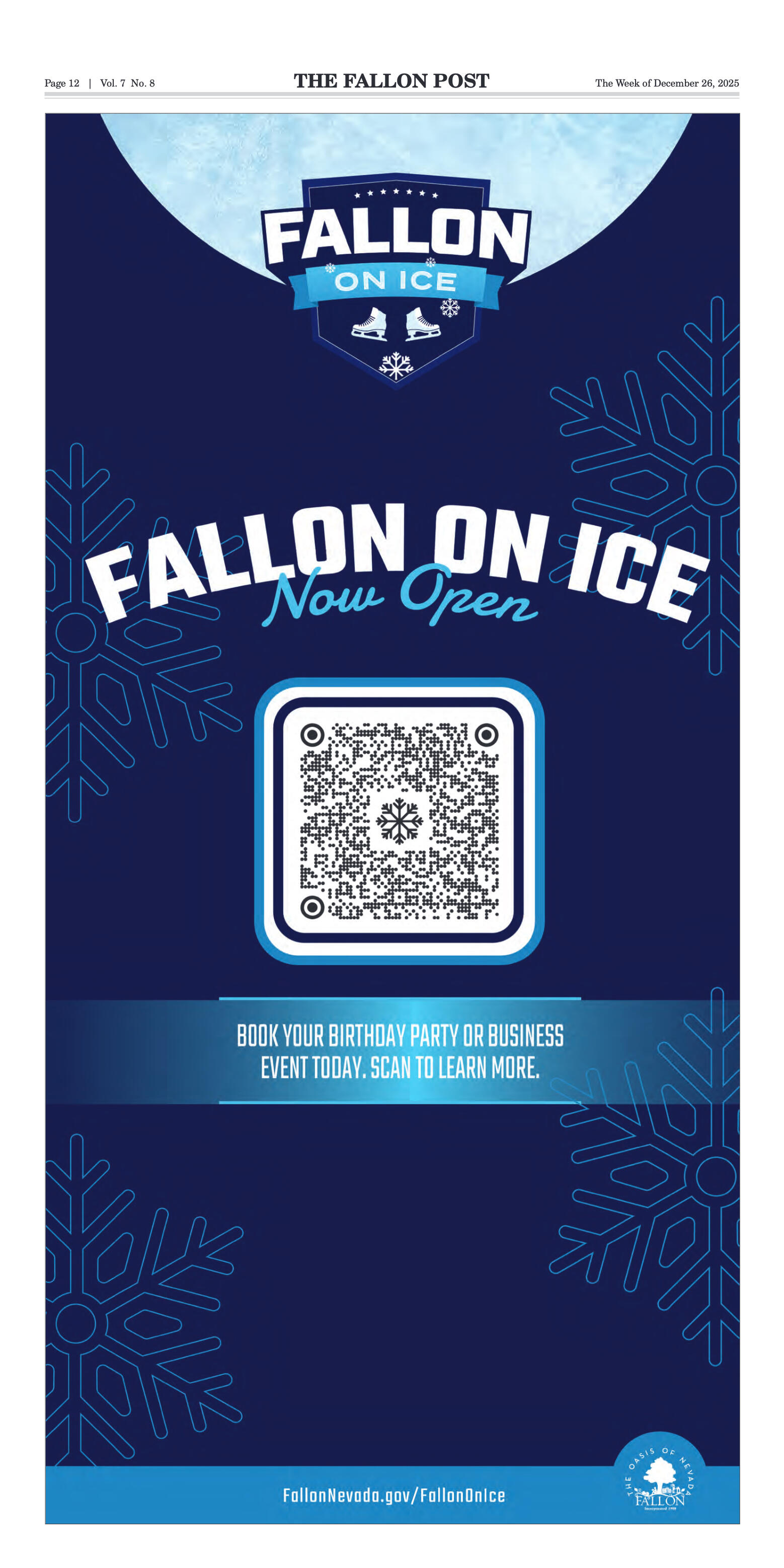
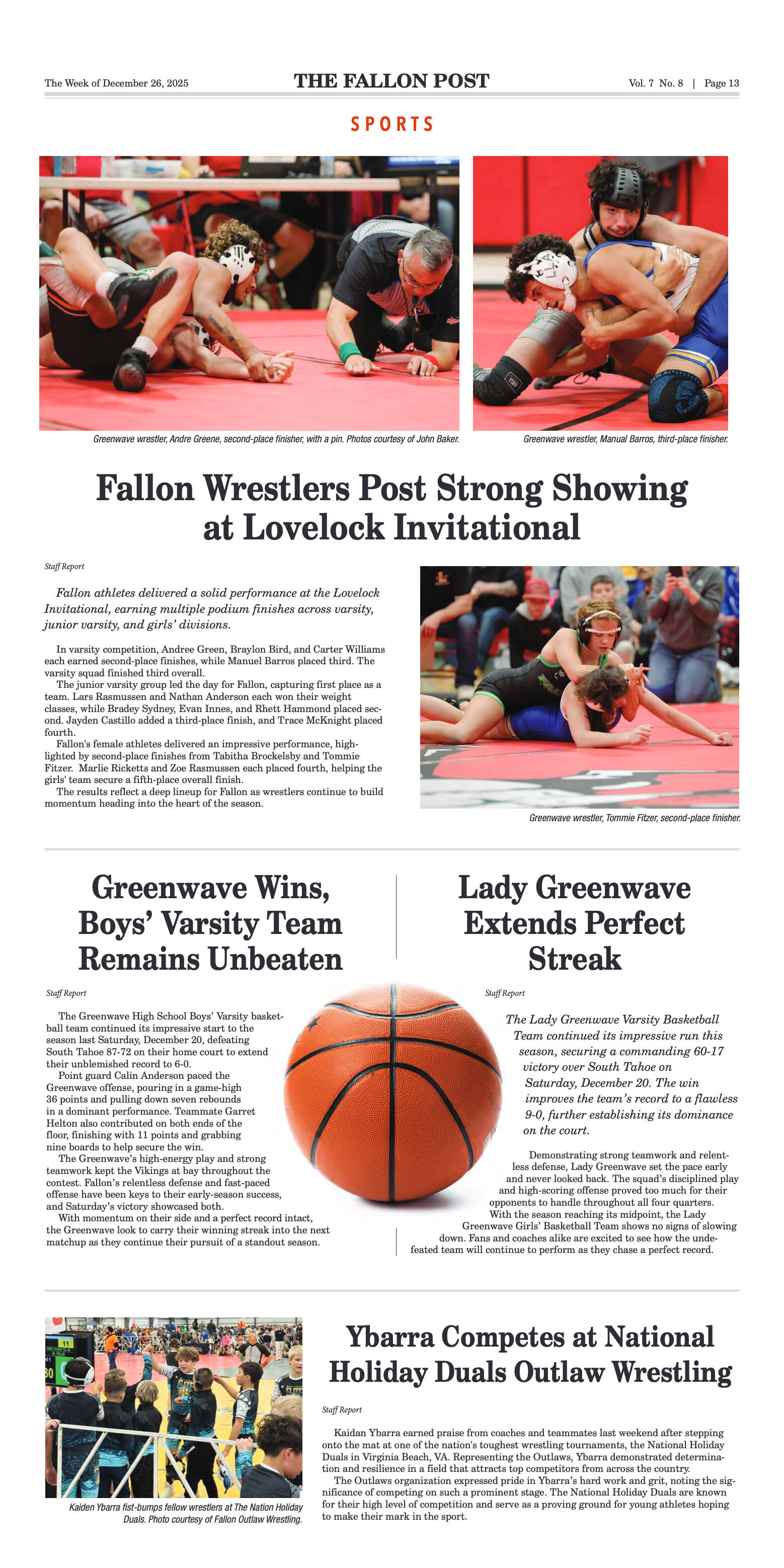
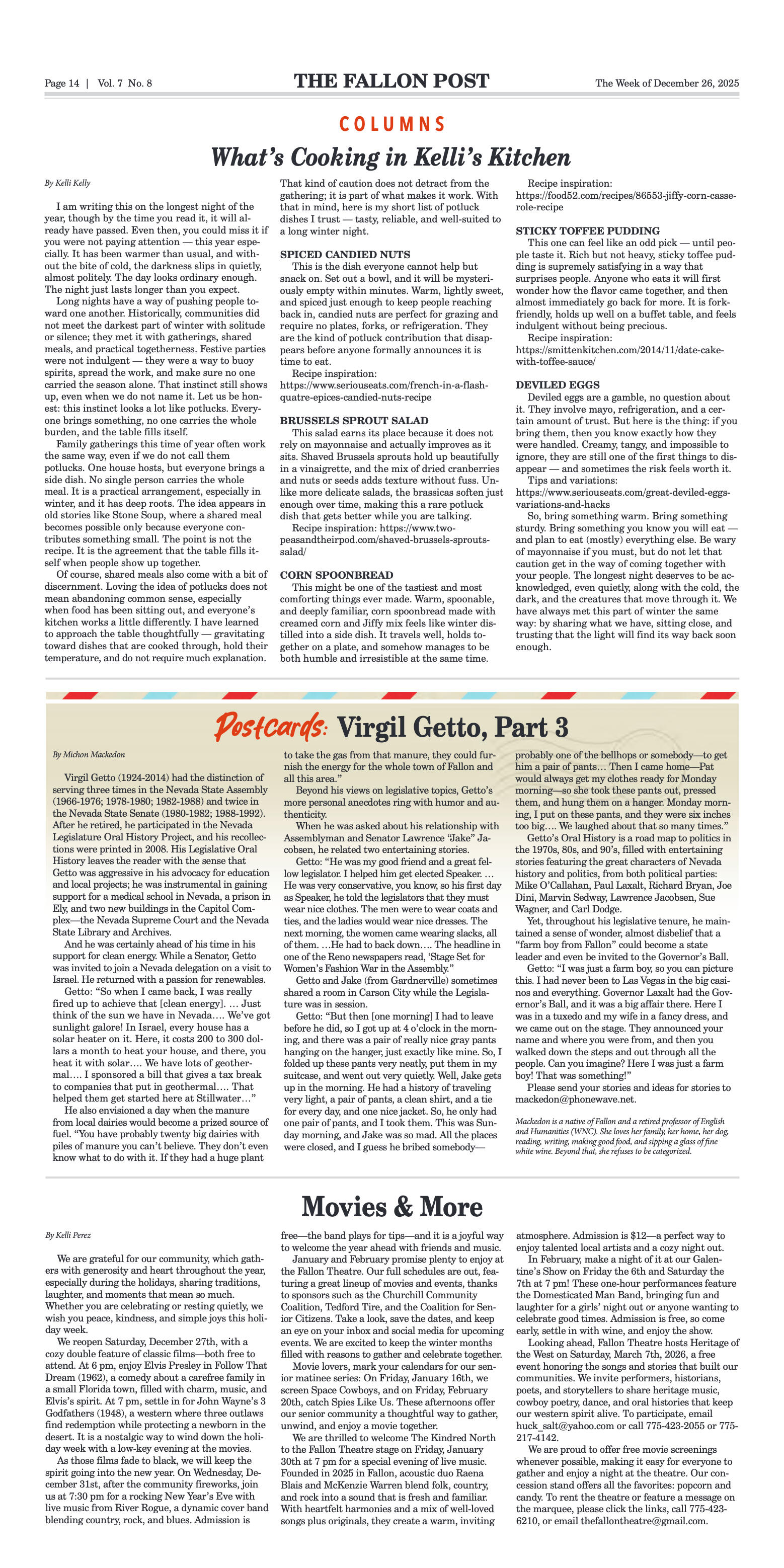
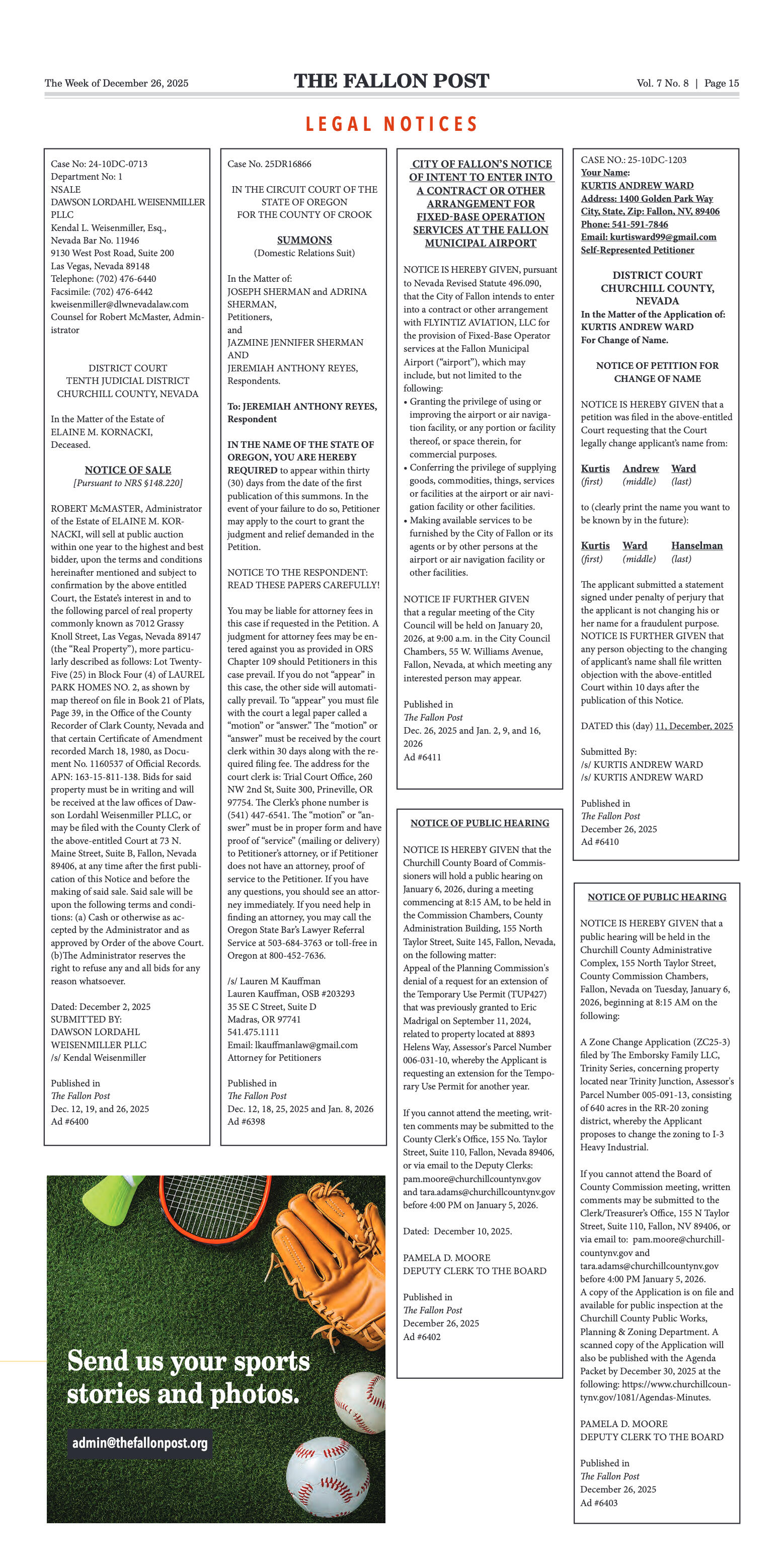
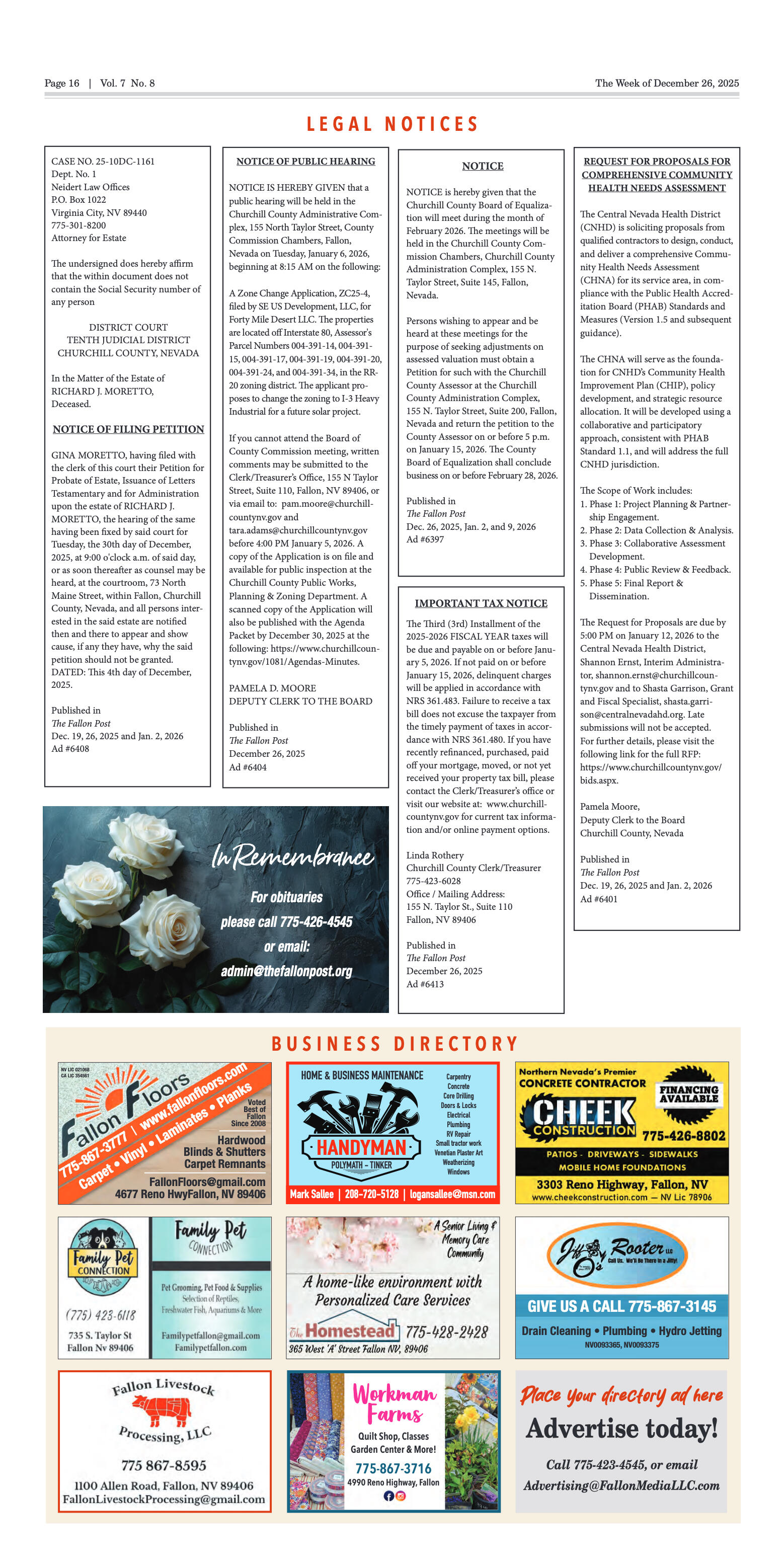

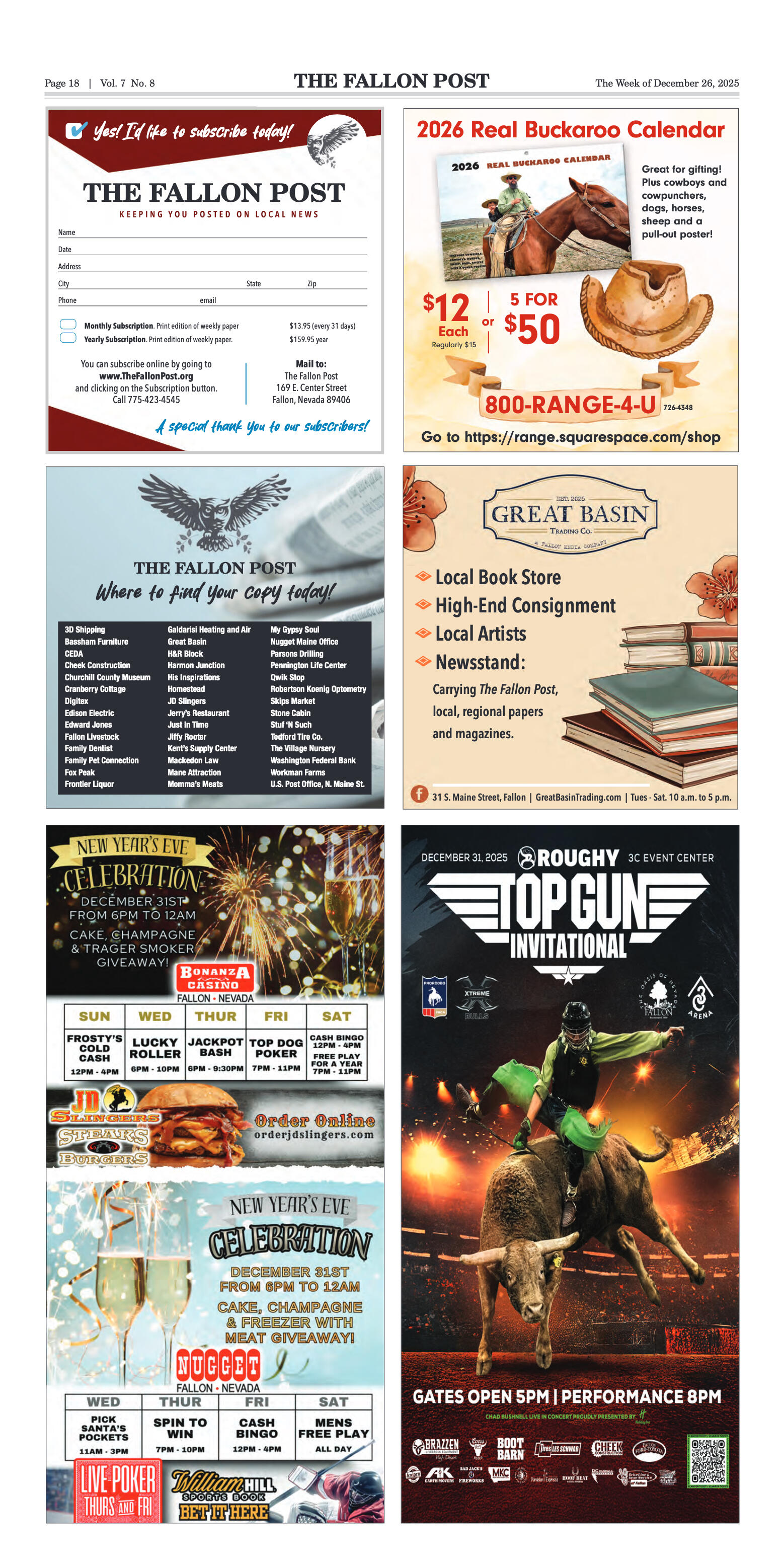



















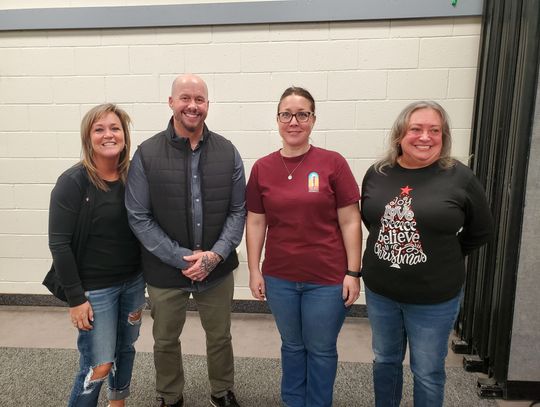
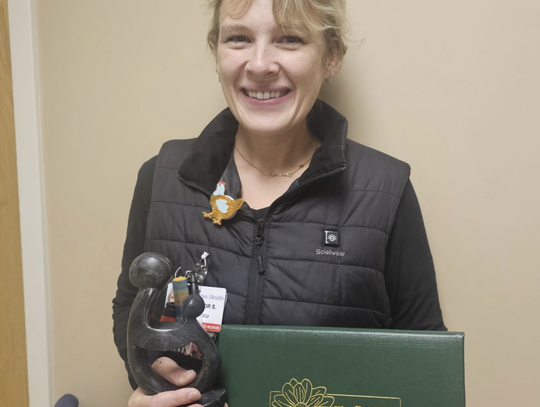



Comment
Comments